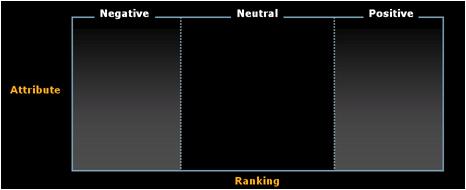Posted by: Mark Upson
Last time, we talked about how Demand Ranking is a statistical method for grouping subscribers based on their Demand Ratings, so let’s take a little deeper dive. Because Demand Ranking gives us a new dimension for comparing and understanding subscribers, it can be correlated with all sorts of firmographic and usage attributes to gain new understanding into loyalty drivers. The visualization of the two dimensions looks something like this where the horizontal axis is the Demand Ranking and the vertical axis is a firmographic or usage attribute:
If loyalty is not correlated to a particular firmographic or usage attribute, the visualization looks similar to this:
If loyalty is correlated to an attribute, the visualization would look more like the following:
When charted against usage attributes such as topic, frequency, denial and license patterns, Demand Ranking can uncover issues and opportunities that can be addressed through account management. For instance, low ranking groups might not be taking advantage of content used by high ranking groups. In this case, account management can be leveraged to promote the availability of more relevant content that can boost subscriber loyalty.
When correlated with firmographic information such as geography, industry and company size, it can spotlight issues and opportunities associated with the product itself. For instance, a global organization might see a normal distribution of rankings when correlated against license use, but when correlated against geography, might identify a dramatic issue in one particular country that requires product changes.
Utilizing Demand Ranking as a new ordinal for analysis enables specific issues and opportunities to be visualized and acted upon- all the way down to the specific subscriber level. Training sessions might be put in place for Subscriber A, while license terms might be offered to Subscriber B. A new sales policy might be put into effect for a specific geography, or content or product sets might be refined. Best of all, the effectiveness of the efforts can be measured and clearly quantified.







